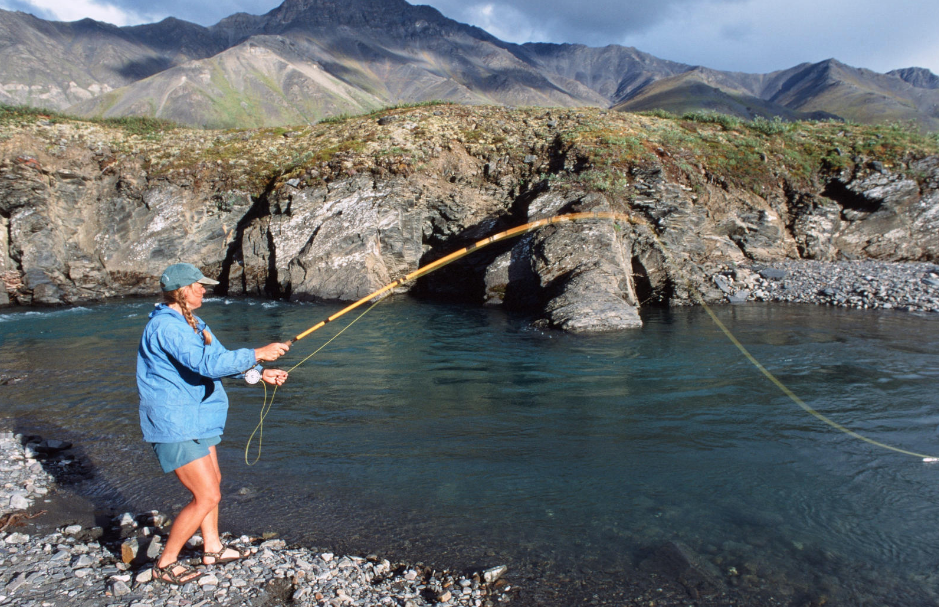
It's the first fair-weather Saturday of the month. Most people are sleeping in—but not you. It’s time to fish!
Typically, you fish a barbless fly because you know it's easier to get the hook out of the fish’s mouth, but today you and your buddy are trying to catch your limit for a fish-fry later. You choose an obnoxiously large streamer with the biggest, nastiest, barb you have in your fly-box.
You and your companion hit the river and find a perfect long, narrow pool. Realizing that power is needed to get the huge fly airborne, you strip line from the reel and your cast lengthens as it moves back and forth across the sky.
Suddenly, your rod catches in a sharp jerk. Downstream, you hear your companion yell in pain. You’ve accidentally hooked her.
Should she grit her teeth while you rip the hook out? Probably not. But this doesn’t necessarily mean the end of your day and a trip to the doctor’s office, either.

Prevention
Of course, the most effective way of managing a fishhook injury is to prevent it from happening at all.
You can avoid some accidental hookings, especially on the face, by wearing a wide-brimmed hat and sunglasses.
Also, be mindful of where your companions are—beforeyou start casting.
Removing a Hook
Attach a 12-inch (30 cm) piece of string or dental floss around the curve of the hook. Simultaneously push down on the eye of the hook to disengage the barb and sharply tug the string in line with the axis of the hook (in the opposite direction the hook entered). The hook should come out easily. Remember to wear glasses to protect your own eyes from the flying hook.
If this doesn’t work or if the barb is right below the skin, you can numb the area with ice or cold water if it’s available and push the point of the barb up through the skin. Then, snip off the barb and back the hook out.
The Treatment Plan
If the wound is bleeding, stopping the bleeding is your priority. Use a piece of wadded fabric—preferably sterile gauze—to apply direct pressure to the wound, and elevate the injured part of the body.
Next, you need to clean and dress the wound. Using washed hands and rubber or latex gloves if available, scrub the skin around the wound, being careful not to get dirt or other debris into the wound, and irrigate it with clean, drinkable water. Then, cover the wound with a bandaid or other sterile dressing.
Antibiotic ointment, applied to the dressing rather than directly to the wound, is also a good idea. You should change the bandages daily.
The Possible Complications
Even minor injuries can have a serious consequence: infection.Your skin is the largest organ of your body, protecting you by keeping fluids in and bacteria out.
Puncture wounds, created by a pointed object (like a hook) breaking through the skin, can allow microbes and germs into the tissue under your skin, causing an infection. An infection could mean you need to leave your trip and get treated by a doctor.
If a wound is infected, signs and symptoms can include redness, swelling, pus, heat, and pain at the site of the injury, increasing and expanding over 18-24 hours.
If you spot an infection early on, once you clean and dress the wound, continue monitoring it. Using a pen, draw a circle around the swollen area to help you see if the infection is spreading or improving.
If there are signs the infection is spreading (fever, chills, swollen lymph nodes or faint red streaks radiating from the site), you need to evacuate the patient to definitive medical care.
Tetanus is unlikely to be an issue in a “clean” outdoor setting. Still, it’s a good idea to make sure your tetanus booster is up to date before you take off into the backcountry.
Next time you accidentally hook yourself, remember to focus on the initial wound cleaning, good dressing and bandaging, and recognition and early intervention for infections. All of this will help make sure you don’t need to end your trip early and can continue enjoying your time on the water.
Editor’s Note: These treatments refer to fishing flies or small lures that are not deeply embedded in your skin. If the hook is large, multiple barbs are embedded, or if it is obviously deep in the skin or muscle, then you should stabilize the hook in place and see a doctor for removal. Also, you should not try to remove a hook that is near the eye.
Written By
Ben Lerman
Ben is the former NOLS Wilderness Medicine Marketing Coordinator and a Wilderness First Responder graduate. He enjoys rock climbing, backpacking, kayaking, and hopes to someday adventure in the mountains on each of the 7 continents.



